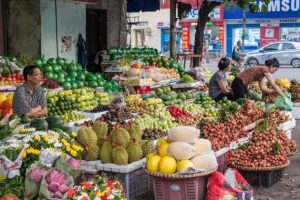WASHINGTON, April 20, 2023 (GLOBE NEWSWIRE) — Today, EB5 Capital joins Huntington Hotel Group and Republic Urban Properties in celebrating the grand opening of Gateway at Millbrae Station in Millbrae, a city just west of the San Francisco Bay, in San Mateo County, California. Gateway at Millbrae Station is a 17–acre $300 million mixed–use master development containing 400 apartment units and 200,000 square feet of commercial space. In 2020, EB5 Capital provided a $36 million preferred equity investment in the 164–room Residence Inn by Marriott hotel located on the site.
"We are thrilled to be part of this significant development in Millbrae, adjacent to the San Francisco Airport and Bay Area Rapid Transit ("BART") station," said Jon Mullen, EB5 Capital's Senior Vice President of Investments. "It is a terrific transit–oriented site which is easily accessible to the entire Bay Area, making it a key location for a hotel." A sufficient number of jobs have been created through the project's development to satisfy the permanent residency requirement for all the EB–5 investors who invested in the project.
The Residence Inn at Gateway at Millbrae Station is one of EB5 Capital's eight projects in the state of California and one of six partnerships structured with Huntington Hotel Group. The hotel welcomed its first guests in February of this year, and today's grand opening represents a major milestone in EB5 Capital's growing portfolio of over 30 completed EB–5 projects across the country.
About EB5 Capital
EB5 Capital provides qualified foreign investors with opportunities to invest in job–creating commercial real estate projects under the United States Immigrant Investor Program (EB–5 Visa Program). As one of the oldest and most active Regional Center operators in the country, the firm has raised nearly a billion dollars of foreign capital across more than 30 EB–5 projects. Headquartered in Washington, DC, EB5 Capital's distinguished track record and leadership in the industry has attracted investors from over 70 countries. In addition to U.S. permanent residency, EB5 Capital offers real estate private equity investments and non–U.S. Citizenship by Investment Programs. Please visit www.eb5capital.com for more information.
Contact:
Katherine Willis
Director, Marketing & Communications
media@eb5capital.com

GLOBENEWSWIRE (Distribution ID 8811474)










